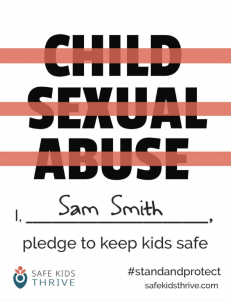Read the Report
Home / Read the Report
Scope
The Children’s Bureau of the U.S. Department of Health and Human Services collects national child abuse incidence data on an annual basis and posts the most recent data on its website. Its most recent report, Child Maltreatment 2018 1 (published in January 2020) reported that an estimated 4.3 million referrals, involving the alleged maltreatment of approximately 7.8 million children were received by Child Protection Services (CPS) agencies across the country. Of the substantiated allegations, almost 61 percent of the children suffered from neglect, about 11 percent suffered physical abuse, and a little more than 2 percent suffered emotional or psychological abuse 2 . The report also estimated that 1,770 children died from abuse and neglect.
Approximately 7 percent of the cases involved sexual abuse. It has been estimated in various studies that 25-40% of women and 8-13% of men experience at least one episode of sexual abuse victimization before they reach their 18th birthday. 3 4
Sexually abusive acts can include sexual penetration, sexual touching, sexual exploitation or non-contact sexual acts such as exposure, voyeurism and showing a child pornography. National statistics also indicate that, instead of strangers, the majority of these sexual offenses (about 85 percent) are carried out by a person in the child’s family or social network. 5 Another common misperception is that it is only adults who sexually assault children. Approximately 40 percent of those who commit sexual offenses against children under the age of 11 years are juveniles – many of whom have been victimized themselves. 6 Unfortunately, however, estimates are that between 70 and 90 percent of child sexual abuse cases are never reported. The under-reporting of sexual abuse is so high that we must address specifically what researchers now document is affecting as many as one in ten children nationwide.
Closer to home, the scope of child abuse and neglect in Massachusetts is no less concerning. In 2019, the Massachusetts Department of Children and Families (DCF) received more than 95,000 reports of the alleged abuse or neglect of children under the age of 18. More than 44,000 reports were screened in for a response. Following the DCF response, the number of supported allegations of abuse/neglect or concerns for risk represented the maltreatment of a minor child in Massachusetts every 11-12 minutes. At the end of June 2019, DCF was serving 93,363 open consumers across the Commonwealth.
1 U.S. Department of Health & Human Services, Administration for Children and Families, Administration on Children, Youth and Families, Children’s Bureau. (2020). Child Maltreatment 2018. Available from https://www.acf.hhs.gov/cb/data-research/child-maltreatment
2 The percentages add up to less than 100 percent because children who were the subject of medical neglect and those who were reported as victims of 2 or more types of abuse were counted separately.
3 Bolen, R. M., & Scannapieco, M. (1999). Prevalence of child sexual abuse: A corrective meta-analysis. Social Service Review, 73, 281-313.
4 Finkelhor, D. (2009). The prevention of childhood sexual abuse. The Future of Children, 19(2). (http://unh.edu/ccrc/pdf/CV192.pdf).
5 Finkelhor, The prevention of childhood sexual abuse, The Future of Children, 169 (2009), (http://www.princeton.edu/futureofchildren/publications/docs/19_02_08.pdf) (Visited 10/12/16).
6 Snyder, Sexual Assault of Young Children as Reported to Law Enforcement: Victim, Incident and Offender Characteristics (2000), National Center for Juvenile Justice, NCJ 182990. (http://www.bjs.gov/content/pub/pdf/saycrle.pdf).
- Acknowledgements
- Executive Summary
- Introduction
- How to Read This Report
- Mission & Purpose of Taskforce
- A Brief History of How the Taskforce Was Organized
- The Charge of the Legislative Language
- Key Sections
- Section 1: Developing Policies and Procedures for Child Protection
- Section 2: Screening and Background Checks for Selecting Employees and Volunteers
- Section 3: Code of Conduct and Monitoring
- Section 4: Ensuring Safe Physical Environments and Safe Technology
- Section 5: Recognizing, Responding to, and Reporting Allegations and Suspicions of Child Sexual Abuse
- Section 6: Training About Child Sexual Abuse Prevention
- Additional Considerations
- Applying the Framework: A Five-Year Plan
- Appendices
- Section-Specific Appendices
- Downloadable Resources

Take the Pledge to Keep Kids Safe
Join us and commit to learning how you can protect the children you serve.
Sign Up to Access Your Learning Center
Customized child sexual abuse prevention guidelines to meet the unique needs of any organization that serves children.
- Evidence-informed guidance
- Actionable prevention steps
- Keeps track of your progress
- Tailored learning tracks


